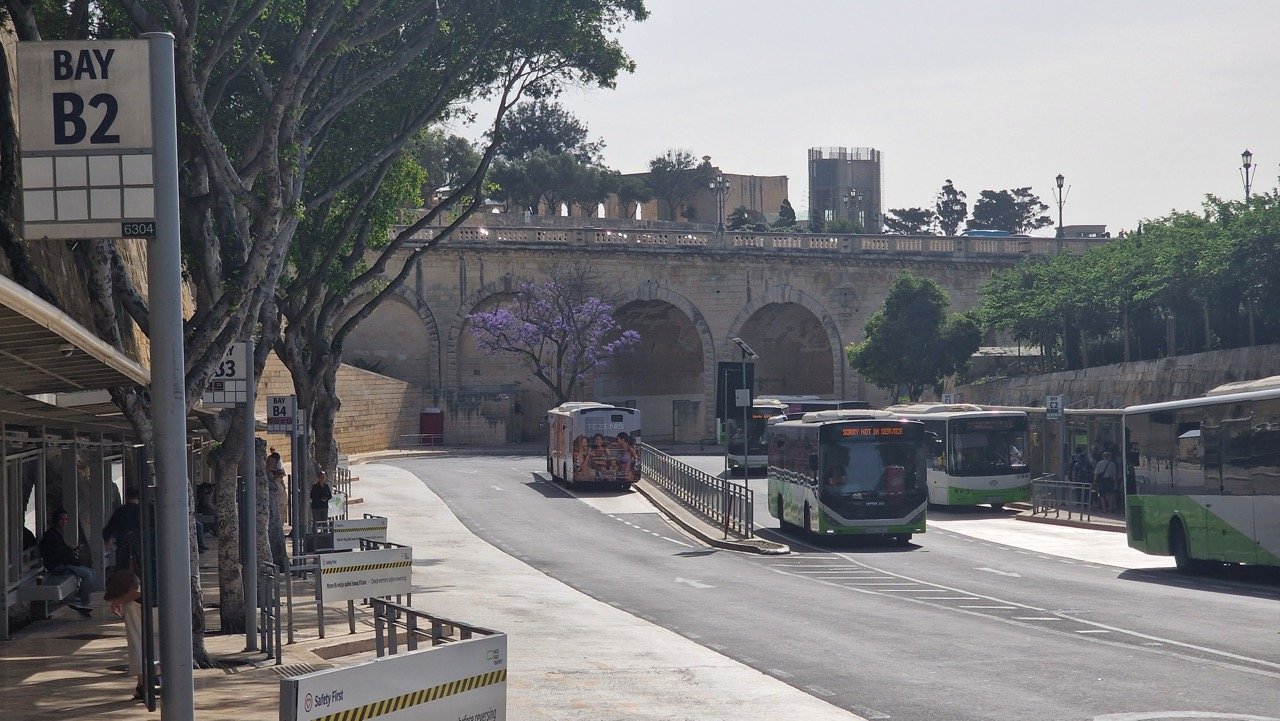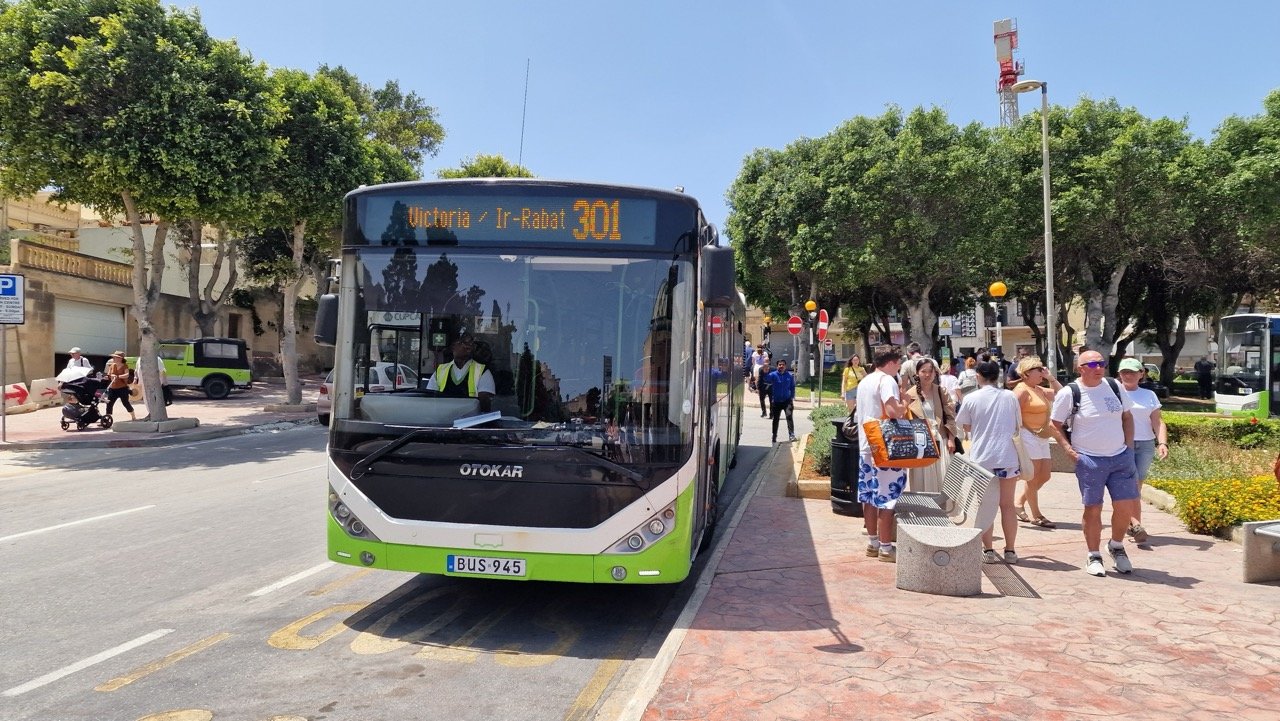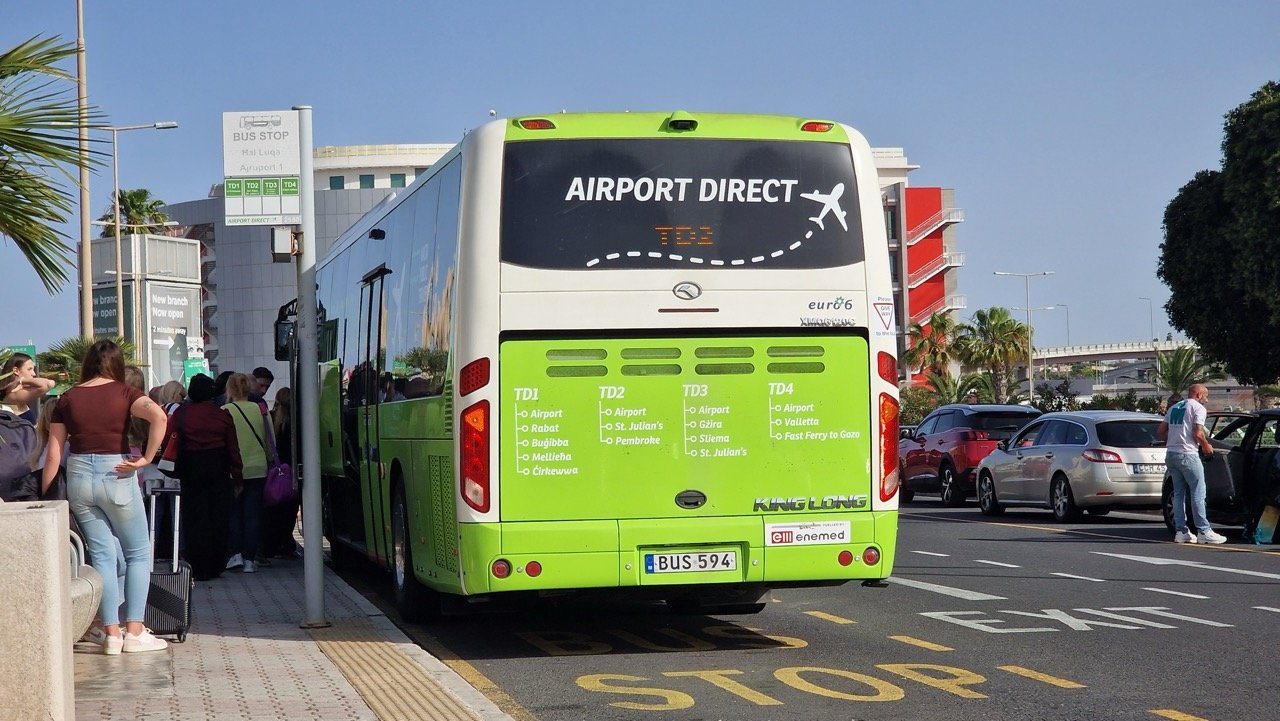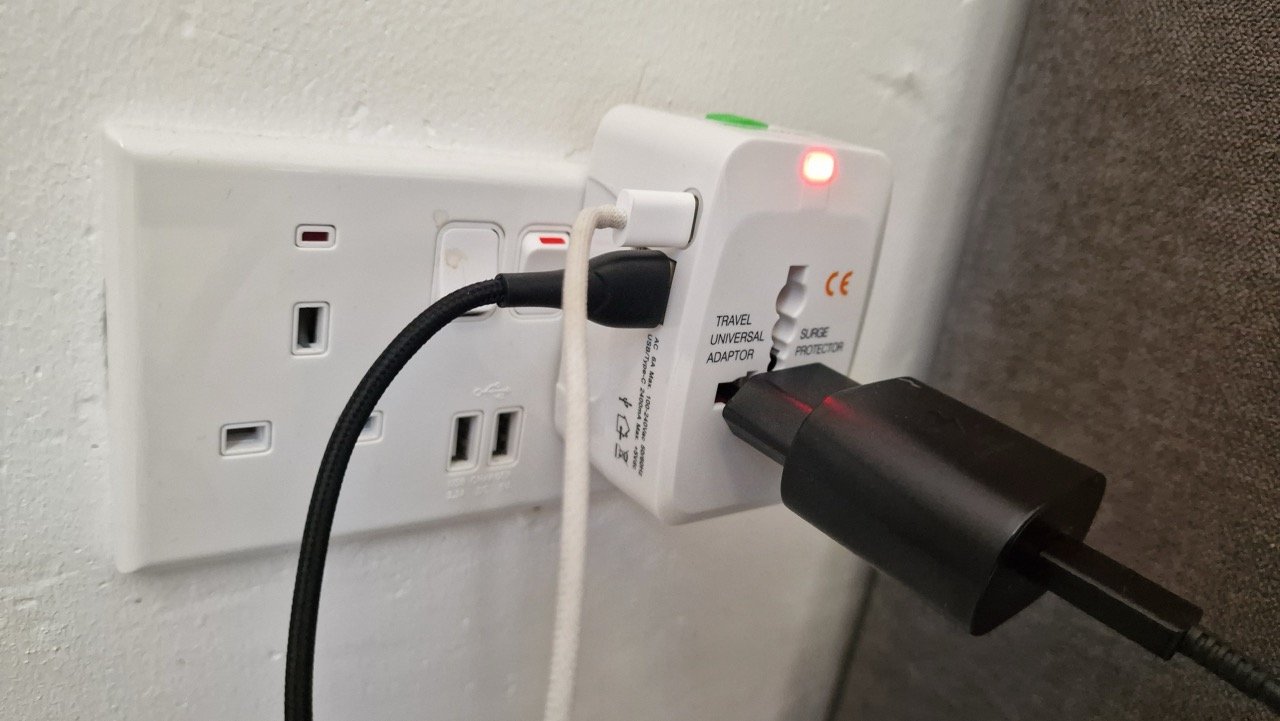Malta’s public transportation system is actually pretty good, especially considering that you can easily get just about anywhere on the island. Still, you can definitely sense a mix of Mediterranean, slightly Arab, but ultimately European vibes in how things work here.
Using public transport in Malta won’t just help you get from point A to B — it’ll definitely add to your local experience while you’re on vacation.
Key Things to Know
Here are the most important things to keep in mind about Malta’s public transport. For more details and fun facts, keep reading below!
- Modes of transport: buses and ferries.
- Service quality: the network and vehicles are solid, delays are common.
- Getting to/from the airport: check out our separate article.
- Prices: single bus ticket €2–3 depending on the season and time of day. Passes are recommended even for tourists.
- Night network: exists, but doesn’t reach every area.
Malta’s Public Transport Network
Malta’s public transport network is essentially made up of an extensive bus system, complemented by a few ferry routes — both between the two main islands and across the long bays. One of the biggest advantages of this system is that you can get just about anywhere on the island easily, usually with only one transfer.
Since most routes on Malta island connect through Valletta’s central bus terminal, it’s a super convenient hub no matter where you’re going or coming from. And if Valletta is your starting point or destination, even better.
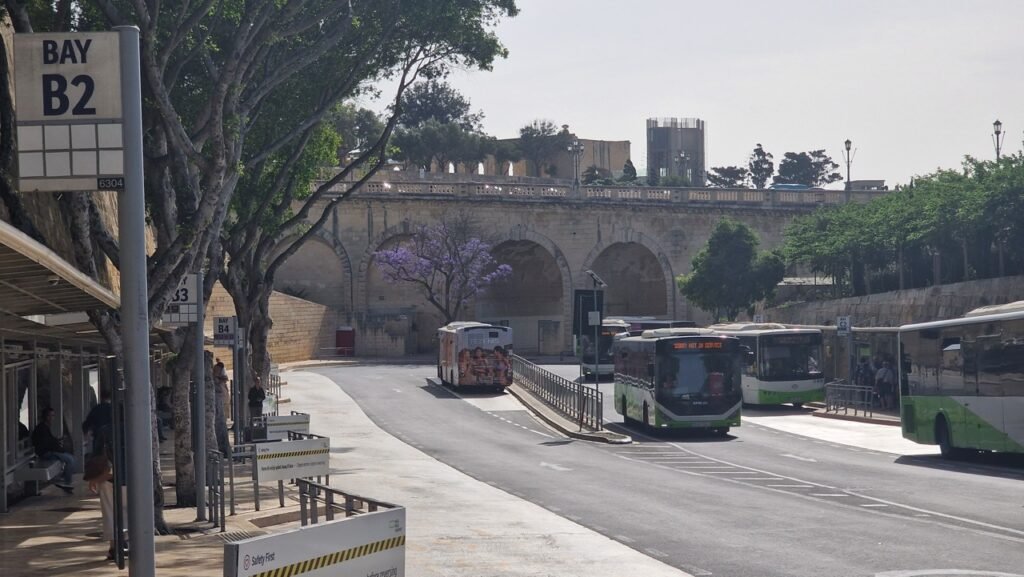
Gozo island has a similar central bus station in Victoria. Between the two islands, there’s a regular ferry service you can use.
Malta Bus Map
It’s surprisingly hard to find a good Malta bus map online. This photo was taken in person at the Valletta bus station — where routes are clearly posted. I cropped and retouched it a bit, but hopefully it helps!
Right-click and choose “Open image in new tab” to see a larger version!
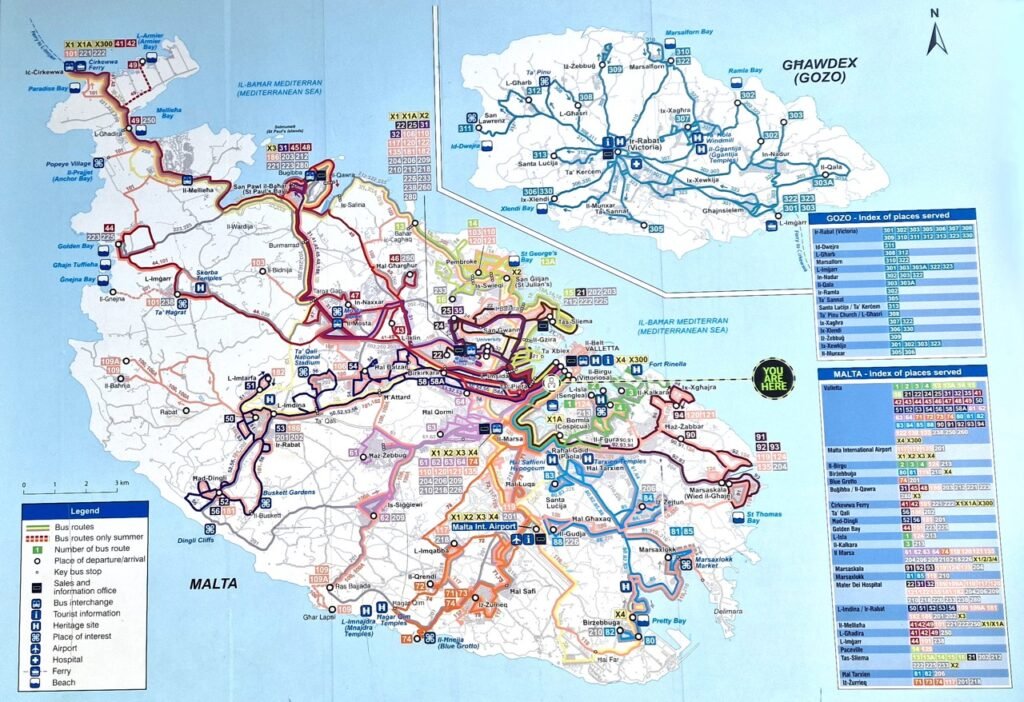
Ferries
Ferries are a key part of public transport in Malta. It’s an island nation, after all, with two separate large islands and no land connection between them. So chances are you’ll need to hop on a boat at some point.
The main ferry between Gozo and Malta is the primary transport link between the two islands. It also carries vehicles, but as a pedestrian using public transport, you’ll find plenty of buses at both terminals to continue your trip. There are direct buses to Valletta on Malta and to Victoria on Gozo, making it easy to connect to anywhere else on either island.
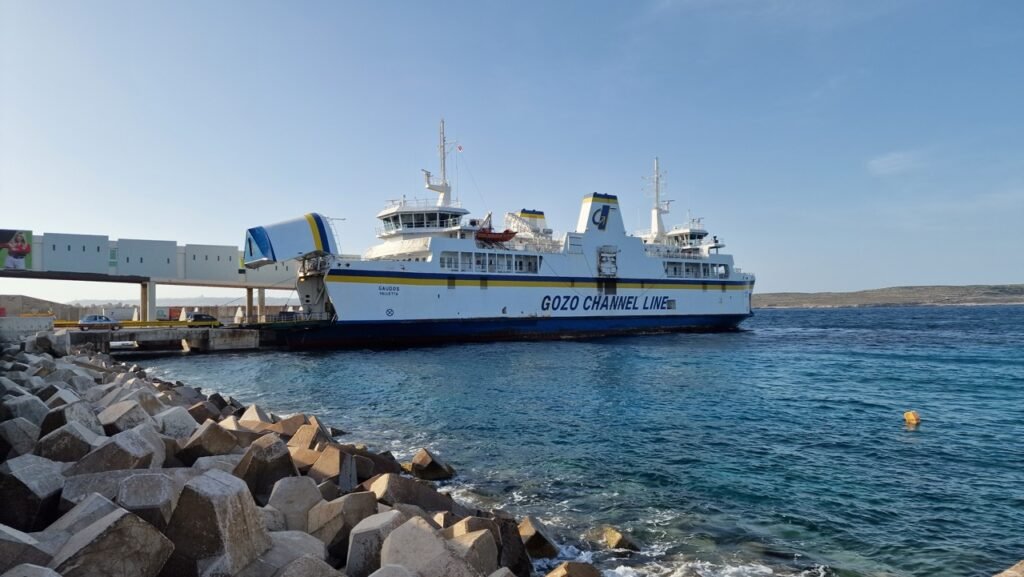
There’s also a high-speed passenger-only catamaran — the Gozo Fast Ferry — that runs between Valletta and Gozo’s ferry terminal. As the name suggests, it’s fast and very convenient, especially if you’re traveling between the capital and Gozo without needing to cross the full length of Malta island.

Beyond that, there are a few smaller ferry lines that cross the bays of Malta island. One is the Valletta–Sliema ferry from the capital’s northern shore to the popular resort town. Another departs from the other side of Valletta, near the fast ferry dock, and heads to the Three Cities — another well-known tourist destination.
Malta Public Transport Prices
Prices are reasonable — especially if you plan ahead and don’t just ride once or twice. A single bus ticket costs between €2 and €3 depending on the season and time of day. It’s not the cheapest, but if you plan to use the bus more than a couple of times, it’s definitely worth getting a travel pass — even from the airport when you arrive.
The four most recommended ticket options (for current prices, check the official MPT fare table):
- Single bus ticket: €2 (€2.50 during peak season)
- 4-day unlimited travel pass (all of Malta): €19
- 7-day unlimited travel pass (all of Malta): €25
- 12-ride pass: €19
First, decide how much you’ll be riding. If it’s just a few trips, go for the 12-ride pass. But if you’ll be using the bus as your main way of getting around (which is very doable!), pick the pass that best fits the length of your stay.
Ferry tickets are priced separately and must be bought on-site. When buying a weekly pass, you may have the option to add the Gozo Fast Ferry access for an extra fee.
What’s Public Transport in Malta Actually Like?
Overall, Malta’s public transport is quite good, but there are a few things to watch out for. The system reflects the island’s pace and culture — so riding it is part of the experience.
The network is great, covering virtually the entire island. And since Malta is small, you can reach just about anywhere with one transfer. Even traveling between islands is fast and straightforward.
The buses themselves are excellent — modern, clean, air-conditioned, and comfortable. During peak hours, you might have to stand, but otherwise, it’s a pleasant ride.
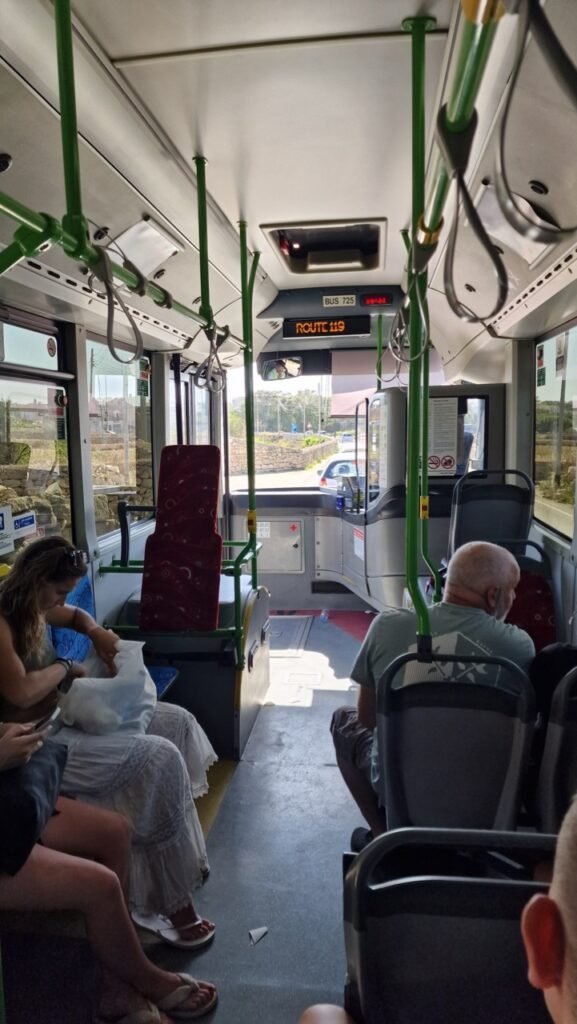
What’s lacking is punctuality. Remember, this is a Mediterranean country — geographically closer to the Arab world than mainland Europe. Buses share the road with cars, there are no dedicated bus lanes, and traffic can be unpredictable. While the schedules are clearly posted and available online, it’s not uncommon for buses to be 30 minutes late or more.
Check out our dedicated article on Malta’s buses — especially the story at the end — for a better idea of what using public transport here is really like!
So in short: using public transportation in Malta is definitely recommended. Just be sure to leave yourself an extra 30 minutes or so if you’re on a tight schedule — because punctuality isn’t exactly the system’s strong suit.
FAQ – Malta Public Transportation
Malta has a well-developed public bus network that covers most towns and tourist attractions. There are no trains, trams, or subways.
You can buy tickets directly from the bus driver using cash (euros) or use a prepaid Tallinja Card. Tickets can also be purchased online or at vending machines.
A single bus ticket costs around €2.50 during peak season (June–October), and €1.50–2.00 off-season. Night services may cost more.
Yes. Tourists can get a 12-trip card (Tallinja 12 Single Day Journeys), or a 7-day unlimited ride pass (Explore Card). Other options include travel bundles for specific durations.
Most routes operate until around 10–11 PM. Night buses run on select routes between major towns.
Yes. You can take a ferry from Malta to Gozo, and both islands have their own bus services.
Generally yes, but buses can be crowded and delayed, especially in the summer. Allow extra time in your itinerary.
